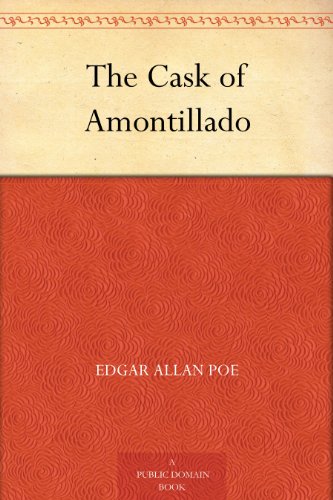“The Cask of Amontillado” is a short story by American author Edgar Allan Poe, first published in 1846. The story is set in an unnamed Italian city and revolves around the themes of revenge, deception, and betrayal.
The narrator, Montresor, opens the story by stating that he has been deeply insulted by a man named Fortunato, a wealthy and respected connoisseur of wine. Montresor decides to exact revenge on Fortunato in a calculated and cold-blooded manner, exploiting Fortunato’s pride and love for fine wines.
Montresor encounters Fortunato during a carnival and tells him about a rare cask of Amontillado, a valuable and exquisite sherry, that he has recently acquired. Fortunato, eager to confirm the authenticity of the wine, agrees to accompany Montresor to his wine cellar, where the cask is supposedly stored.
As they descend into the dark and damp catacombs, Montresor keeps Fortunato’s spirits high with flattery and alcohol, slowly leading him deeper into the underground labyrinth. Montresor is careful to express concern for Fortunato’s health, feigning worry that the damp air may exacerbate his persistent cough, but Fortunato, determined to taste the Amontillado, insists on continuing.
Upon reaching a small, hidden recess, Montresor quickly chains Fortunato to the wall, revealing that there is no cask of Amontillado. He then begins to build a brick wall, sealing Fortunato inside the niche. Fortunato slowly sobers up and realizes the horrifying situation he is in, but his pleas for mercy fall on deaf ears.
Montresor finishes the wall and leaves Fortunato to die in the darkness, undisturbed for half a century. The story concludes with Montresor’s chilling words: “In pace requiescat!” (May he rest in peace.)
In summary, “The Cask of Amontillado” is a dark tale of revenge and betrayal, as Montresor lures the unsuspecting Fortunato to his doom using deception and manipulation, ultimately burying him alive in the depths of the catacombs.
Main Takeaways
Here are some of the main takeaways
- Revenge: The driving force behind the story is Montresor’s desire for revenge against Fortunato. Montresor meticulously plans and executes his vengeance, illustrating the potential dangers of holding onto grudges and seeking retribution.
- Deception and manipulation: Montresor uses deception and manipulation to lure Fortunato to his demise. He exploits Fortunato’s pride and love for wine, and maintains a facade of friendship and concern throughout the story, showcasing the dark side of human nature.
- The dangers of pride: Fortunato’s pride, particularly in his wine expertise, ultimately leads to his downfall. His eagerness to prove himself as a connoisseur blinds him to Montresor’s true intentions, serving as a cautionary tale about the perils of arrogance.
- Dark atmosphere: The story’s setting in the damp, dark catacombs contributes to the overall sinister atmosphere. The descent into the underground labyrinth mirrors the story’s descent into darkness, both literally and figuratively.
- Irony: “The Cask of Amontillado” is filled with various forms of irony, such as verbal irony, dramatic irony, and situational irony. Montresor’s feigned concern for Fortunato’s well-being and Fortunato’s complete obliviousness to his impending doom are examples of irony at play.
- Unreliable narrator: Montresor, as the narrator, is unreliable and biased. The nature of the insult that motivated his revenge is never revealed, leaving readers to question the justification for his actions and the reliability of the account.
- The power of storytelling: Poe’s mastery of suspense and psychological horror, combined with his vivid descriptions and use of symbolism, make “The Cask of Amontillado” a compelling and thought-provoking story that continues to captivate readers.
I hope you find the Cask of Amontillado summary helpful and inspiring!




